Updated April 2023
Son Tra Peninsula stretches to around 696 metres tall (2,283-feet) on the outskirts of Da Nang. It overlooks the Bay of Da Nang and the East Sea and is considered to be one of the main attractions in the area.
Son Tra’s natural forests, steep and sweeping mountain roads, gobsmacking views, diverse and unique wildlife, pristine beaches, campsites, trekking trails and more ensure there’s something for everyone.
And then there’s the unmissable Lady Buddha and the Linh Ung Pagoda all within a few kilometers of Da Nang city center. And from Ban Co Peak, on a clear day you can see the Hai Van Pass, Ba Na Hills and the Marble Mountains.
Below is a complete guide to visit Monkey Mountain and what makes it so fascinating for both locals and tourists.
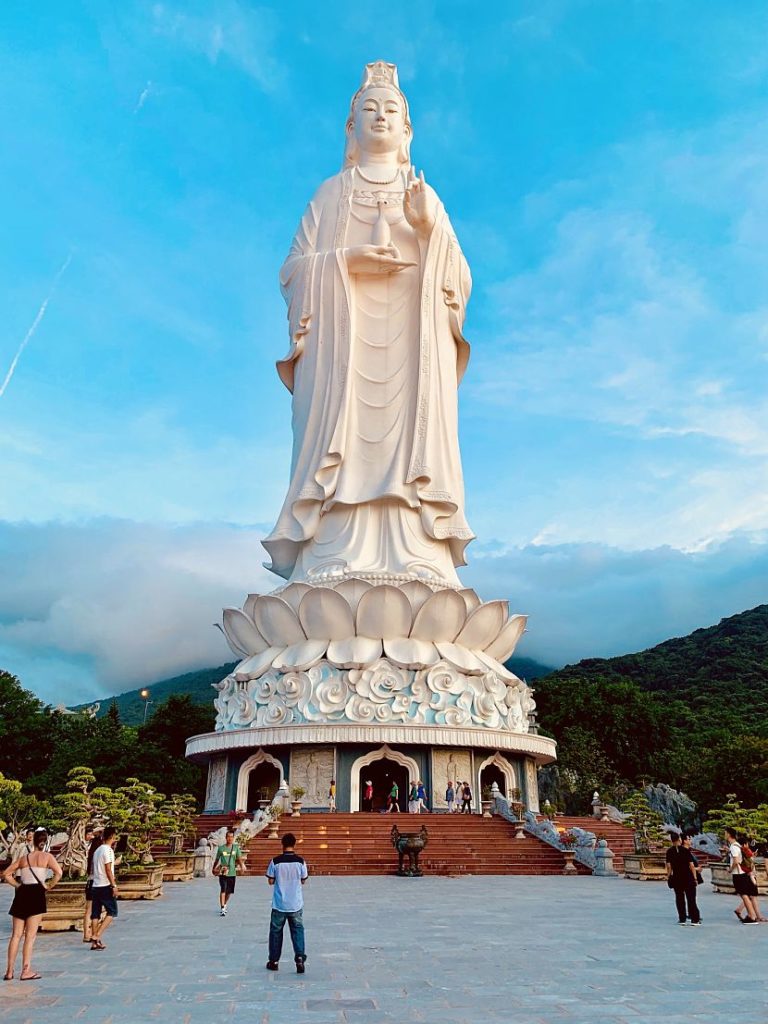
About Monkey Mountain, Da Nang (Son Tra)
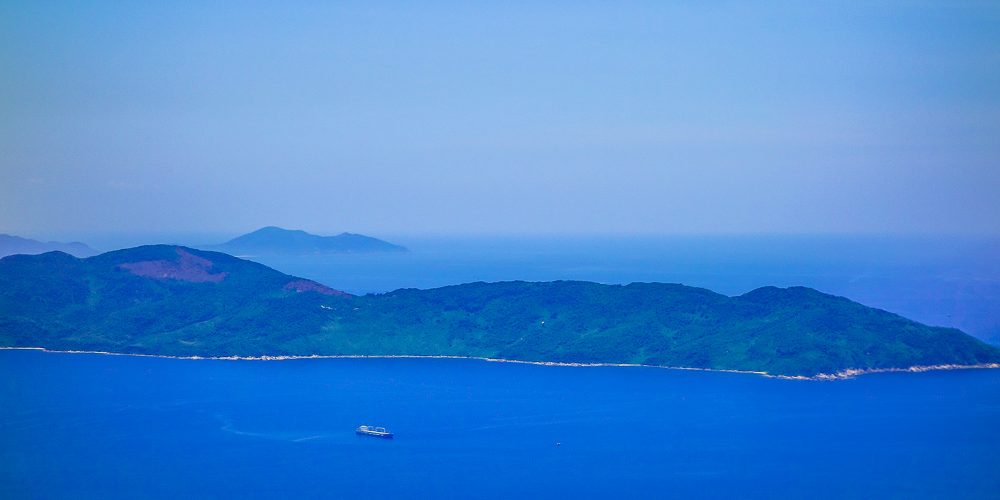
Where is Monkey Mountain (Son Tra)?
Monkey Mountain (Son Tra), one of the main landmarks in Central Vietnam, is 10 kms from Da Nang’s city center and about 42 kms away from Hoi An. If you want to continue your journey up north, Hue, another favorite stop for tourists, is 110 kms away from the Son Tra Peninsula.
What is Monkey Mountain (Son Tra)?
Son Tra is a rugged mountain range that rises abruptly from the sea to almost 700 meters. The Son Tra Peninsula coastline meanders 32 kilometers featuring both rocky shores and beautiful beaches.
Nowadays much of the peninsula is protected as the Son Tra Nature Reserve and is home to over 250 different species, notably several varieties of monkey – including the famously endangered, Red-shanked Douc Langur – and a diverse range of reptiles and birds.
One of the world’s leading luxury resorts sits beside a gorgeous bay on Son Tra Peninsula, making it popular for jet setters. In the higher lush forest locations where the red-shanked douc live, there are sweeping outlooks and a military facility remains from the Vietnam War adjacent to one of the peaks.
Son Tra is also home to the great Lady Buddha statue that faces Da Nang, the Linh Ung Pagoda and a number of special attractions.
Explore Son Tra and you won’t regret it. Its diverse attractions and magnificent views provide countless opportunities for stunning photos and lasting memories.

History of Son Tra Peninsula
Before 1400 modern-day Son Tra was an island with three peaks off the coast of Da Nang but sediment from the Han River over time formed an isthmus that connected it with the mainland. Once the southern edge was cut off from the sea, the ‘Son Tra Peninsula’ was born.
‘Son Tra Mountain’ was the first name of this imposing landscape to the northeast of Da Nang. It was called ‘Camelia Mountain’ because of a profusion of camellias – hoa tra – in the area. The name stuck for locals and in 1997 the nearby urban district was also named Son Tra District.
During the American-Vietnam War however, Son Tra was used as a US military base for radar and communications. The American soldiers called Son Tra Peninsula the contemporary English name – Monkey Mountain – because of the many troops of monkeys that can be spotted in the area. Today, this is how it is known worldwide.
The Son Tra Peninsula has been spiritually significant for Da Nang locals for hundreds of years and many Buddhist temples have been sited there over time. The most prominent of these is the Linh Ung Pagoda.
Fun Fact: Chinese merchants call Da Nang ‘Clam Harbour’ because ‘Son Tra Mountain’ and its serrated coastline resembled to them a giant clam.
Son Tra Nature Reserve
Featuring the only coastal rainforest remaining in Vietnam, Monkey Mountain (Son Tra) is considered a biodiversity hotspot.
Animals on Monkey Mountain (Son Tra)
The Son Tra Nature Reserve supports a rich diversity of wildlife species. Its fauna includes 287 species, of which 29 are considered rare.
The 287 animal species comprise: 36 mammals, 106 birds, 23 reptiles; 9 frogs, and 113 insects. They include the leopard cat, the slow loris, the ferret-badger and the Rhesus macaque.
Wild Primates on Son Tra
Importantly, the nature reserve is home to an estimated of 1330 Red-shanked Douc Langurs, an endemic and critically endangered primate species native to Indochina. These striking primates are known for their unique coloration which is worthy of a full description.

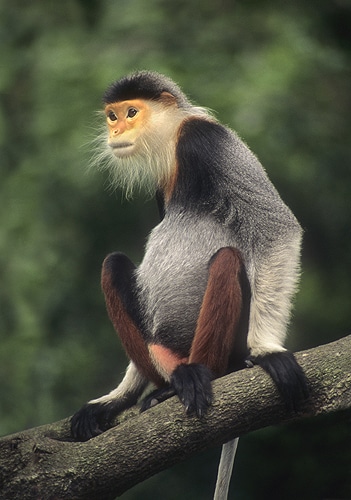
The Red-shanked Douc Langur’s crown is silver, their temples are red and their foreheads are black. They have white whiskers and the fur on their cheeks and their throats is white. Their collar is orange with black on each shoulder. Their face is yellow-brown and they have light blue eyelids. Inner arms and back thighs are black while their lower legs are a vibrant red. Their abdomens and backs are silver and their tails are white and are often equal in length to their head and body length.
If you’re lucky enough to spot a Red-shanked Douc Langur it will be an experience that will live with you long afterwards, but if you don’t you may well come across other primates such as the Long-tailed Macaque or the Rhesus Macaque.
Long-tailed Macaques are gray-brown monkeys with distinctive long tails and pink or red faces. Intelligent and adaptable, they are often seen near human settlements searching for food.
Rhesus Macaques similarly have gray-brown fur and pink or red faces. They are social animals and can live in large groups of up to several hundred individuals.
It’s important to note that while the monkeys and other primates may be entertaining to watch, they are wild animals and visitors should exercise caution and not feed them or get too close.
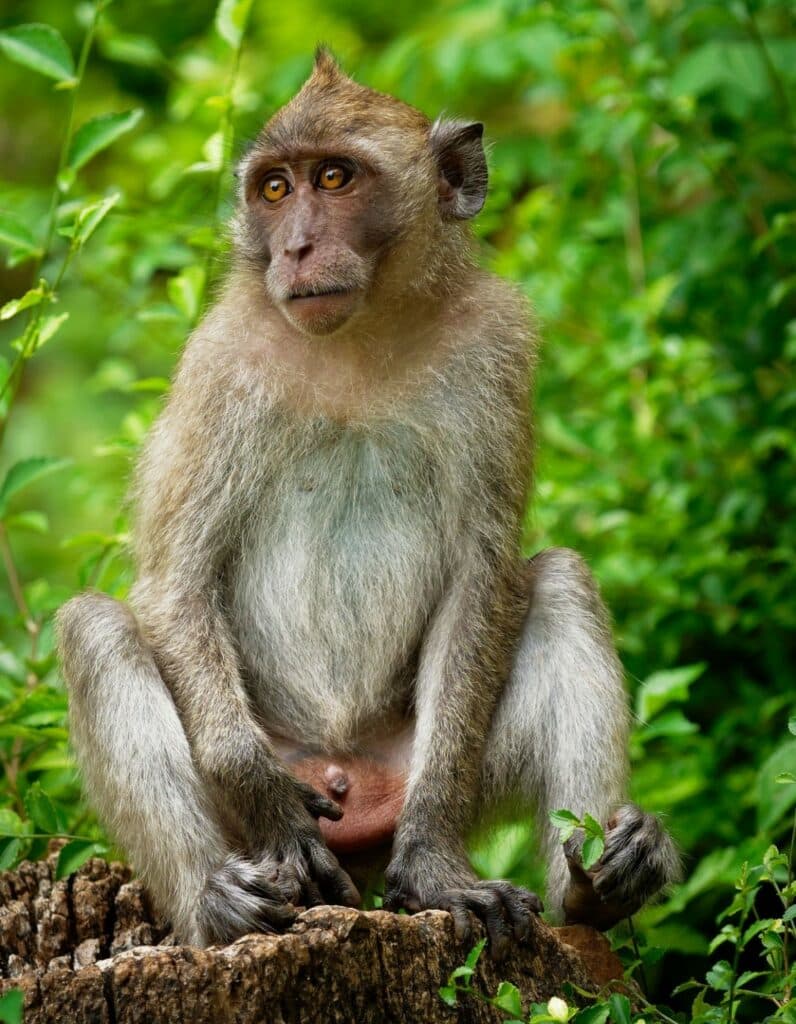
Birdlife on Son Tra
A haven for bird-watchers, some of the 100 or so bird species on Son Tra Mountain are: the Great Hornbill, the Red-headed Trogon, the Fairy Pitta, the Green-eared Barbet, the Racket-tailed Treepie, the Greater Racket-tailed Drongo, the Crimson Sunbird, the Blue Rock Thrush as well as several species of waterfowl and kingfisher.

Other Animals on Son Tra
In addition to the monkeys, Monkey Mountain is home to a wide range of wildlife such as reptiles, small mammals and insects. Some of the most common reptiles in the region include the Tokay Gecko, the Burmese Python, the Many-banded Krait and the Water Monitor.
Aside from the primates, other mammals on Son Tra include the Sun Bear, the Asian Black Bear and the Clouded Leopard.
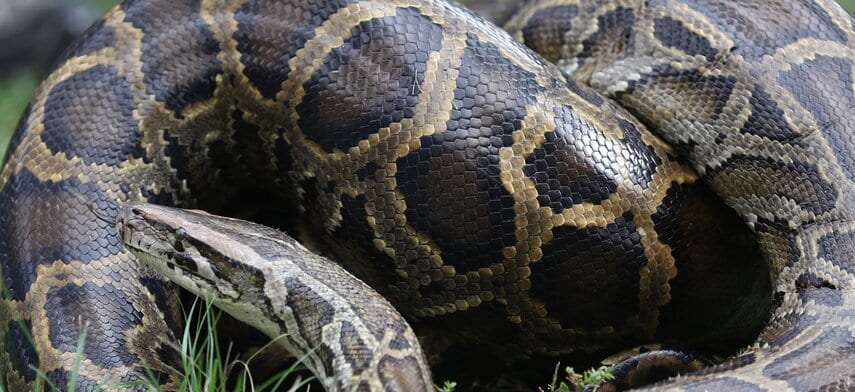
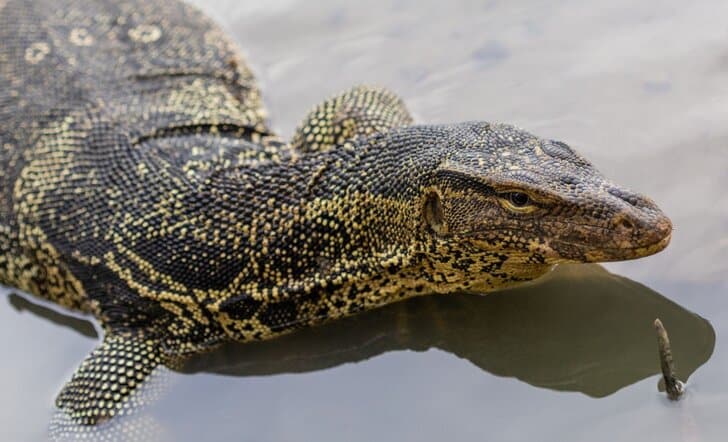
Plants on Monkey Mountain (Son Tra)
The mountain’s natural forests consist of both evergreen and deciduous trees, providing a diverse habitat for a variety of animal species. As for the plants, one of the most important is the endangered species, Parashorea stellata, which is protected on Son Tra Peninsula.
Parashorea Stellata
Parashorea stellata, also known as the Thai Rosewood, is a tall, tropical tree species native to southeastern Asia. A primary component of the Red-shanked Douc Langurs diet, Parashorea stellata, like them, is an endangered species (due to overexploitation for its wood and habitat loss from deforestation).
Highly prized for its rich colors and durability – making it ideal for furniture, musical instruments and high-end flooring – parashorea stellata is a protected species in the Son Tra Nature Reserve and many other places besides.

It is vital not just to the well-being of the Red-shanked Douc Langurs, but it provides food and habitat for a large variety of other primates and birds as well.
The 800-Year-Old Giant Banyan Tree
One of the most remarkable species on Monkey Mountain is the towering giant banyan tree, which can grow to enormous heights over hundreds of years and has complex root structures that create a maze-like effect.
A very popular spot towards the end of Son Tra Peninsula, not far from the winding road, is the site of an 800-year-old Banyan tree with its myriad aerial roots which descend from incredible heights to the soil below in a miraculous display.
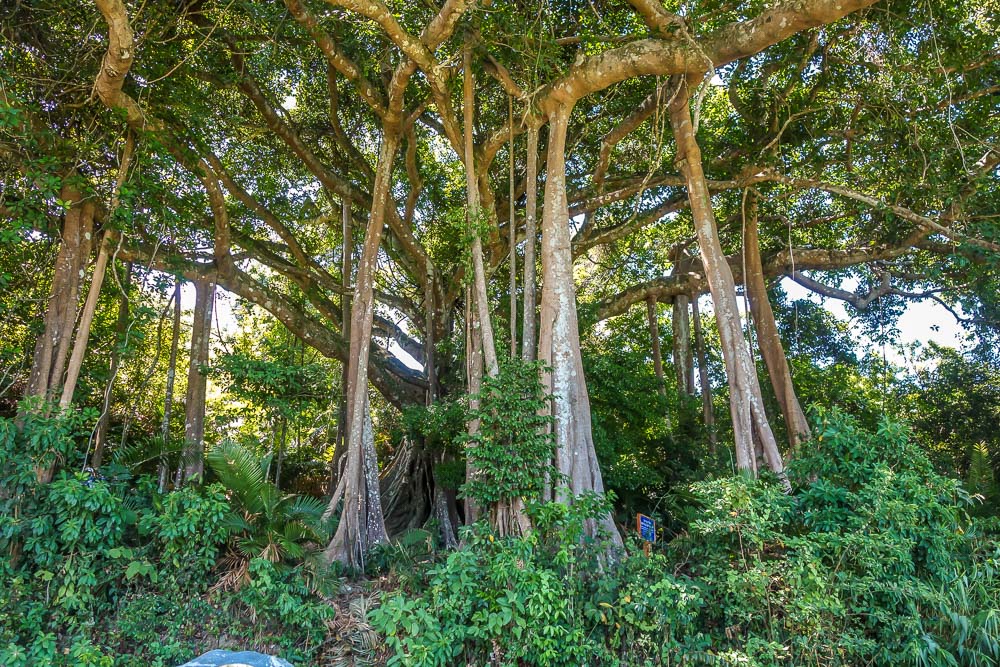
Other Plants in Son Tra Nature Reserve
The mountain is also home to bamboo groves, ferns, and many other types of tropical foliage. Prominent are Weeping Figs that can soar to 20 meters, Giant Crepe Myrtles with their showy flower clusters, the deciduous cotton tree with its striking red flowers in the dry season and the elephant apple tree.

Outside the Son Tra Nature Reserve
While Monkey Mountain near Da Nang is primarily known for its natural forests and wildlife, there are also areas of commercial crops and plantations on the Son Tra Mountain.
One of the most prevalent crops on the mountain is tea. There are several tea plantations that produce high-quality green tea, oolong tea, and black tea. Visitors can tour the plantations and learn about the history and culture of tea production in Vietnam.
In addition to tea, there are also fruit orchards on the mountain. These orchards grow a variety of fruits such as mangoes, papayas, and dragon fruit.
Another commercial crop found on Son Tra Peninsula is rubber. Rubber plantations are common throughout parts of Vietnam, and Monkey Mountain is no exception. The rubber trees are typically grown in neat rows, creating a uniform and aesthetically pleasing landscape.
While these plantations and commercial crops may not be the main draw for visitors to Monkey Mountain, they do provide a unique perspective on the region’s agricultural history and current economic activity.
Monkey Mountain’s Main Attractions
Linh Ung Pagoda and Lady Buddha
Linh Ung Pagoda was originally built during the 18th century and nowadays is also home to a 67-metre tall white statue of the Goddess of Mercy or Lady Buddha which was added in 2010. Linh Ung Pagoda is the largest pagoda in Central Vietnam and the Lady Buddha statue is the tallest Buddhist statue in the whole country.
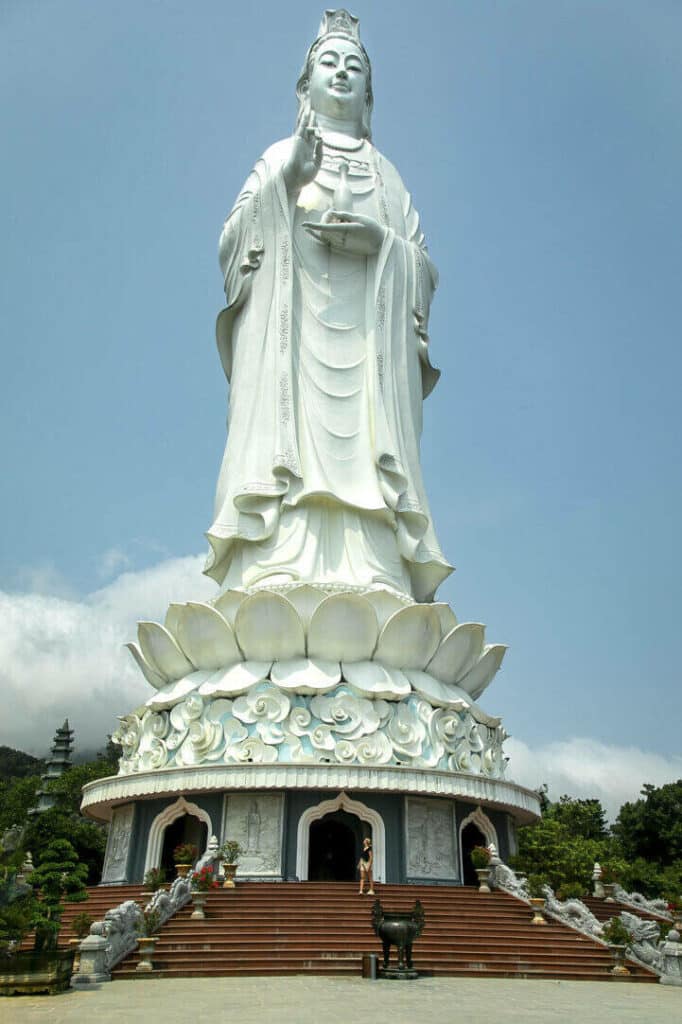
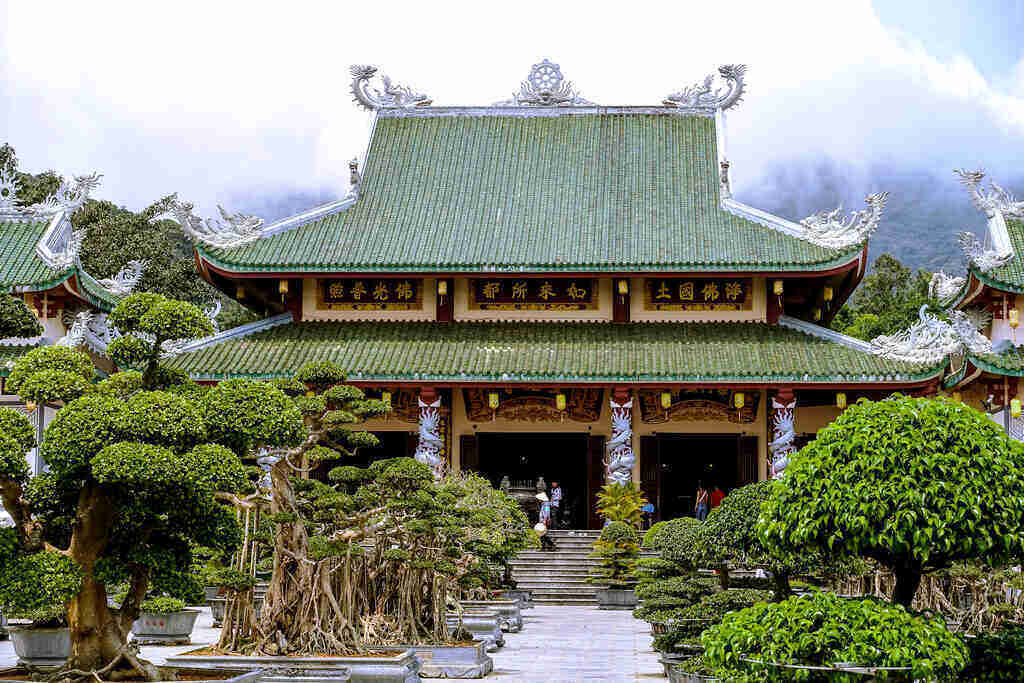

At 67 meters, Lady Buddha in Da Nang is as tall as Christ the Redeemer standing on top of Christ the Redeemer, but only half a Statue of Liberty. It sits on a lotus flower with a diameter of 35 meters. The entrance is free of charge but keep in mind that it can get crowded with pilgrimages, especially during special occasions.
Although the Linh Ung Pagoda and Lady Buddha look ancient, for the people of Da Nang they are actually symbols of the city’s modernization, with some elements from the 18th century Nguyen Dynasty (a curved roof with dragons) combined with a modern Vietnamese style. The mixture of styles and materials represents the diversity of the people that live in modern day Da Nang and serves as a symbol that Da Nang is home to everyone!
The Lady Buddha statue is a symbol of peace, joy and prosperity. It is thought to bring good luck to those who visit it. The statue represents Avalokitesvara or Guanyin, a female bodhisattva from Buddhist mythology who is believed to help all living beings with her compassion and mercy.
Local people believe her presence protects their city from typhoons. They also believe that the Linh Ung Pagoda on Son Tra Peninsula combines with two other temples – in Ba Na Hills and Marble Mountains – creating a protective triangle, keeping bad things away.
Aside from the Lady Buddha Statue and the Linh Ung Pagoda temple, the Linh Ung Pagoda courtyard features a vast collection of statues – the Arhat Statue Garden.
Other points of interest include the Xa Loi Tower, a large Reclining Buddha and another statue garden below the Reclining Buddha statue. There are also two major arched gates and finally, behind the Linh Ung Pagoda main building, there is a third collection of impressive statues, somewhat forlorn, hidden from the public gaze.
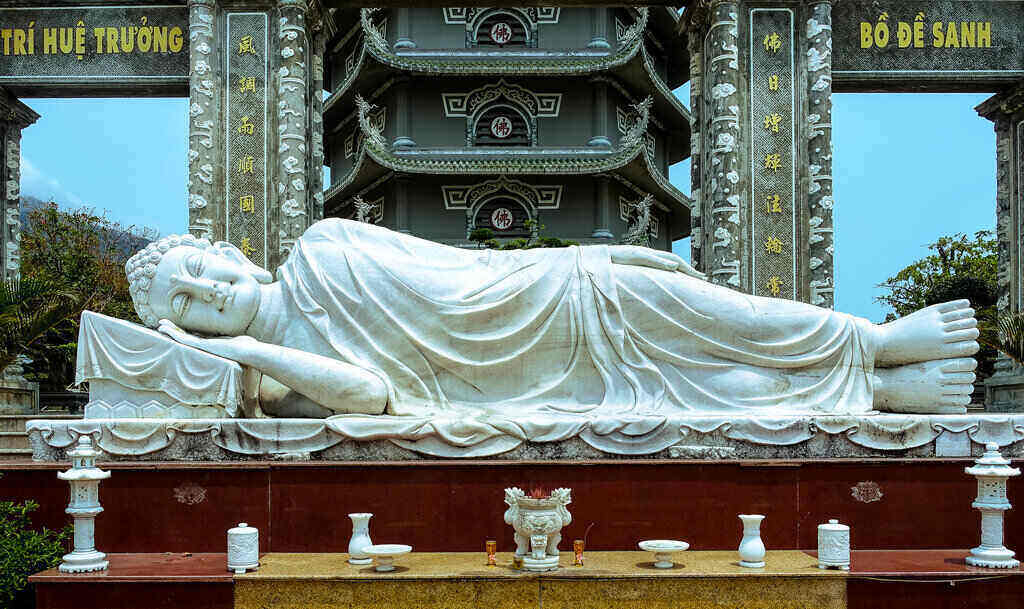
Hiking on Son Tra
Hiking at Son Tra Peninsula near Da Nang, Vietnam offers visitors the chance to explore the natural beauty of the area and take in amazing views of the surrounding landscape. There are multiple hiking trails of varying lengths and difficulty available, ranging from a leisurely stroll to a challenging all-day trek.
One of the most popular hiking routes is the 6.5 km Bai Bac Trail. This trail takes hikers through the lush natural forests of Monkey Mountain and offers stunning views of the coastline and ocean below. The trail is rated as moderately difficult and can take between 2-4 hours to complete.
For those looking for a more challenging hike, The Summit Trail to the top of Monkey Mountain is a good option. This trail starts from the Buddha statue and is about 10 km in length. The trail can take between 4-8 hours to complete and requires a good level of fitness and stamina. At the top, hikers are treated to breathtaking panoramic views of the area.
It’s important for visitors to keep in mind that hiking in tropical environments can be strenuous and hot, so wearing appropriate clothing and footwear, bringing plenty of water and snacks, and taking breaks as needed is essential.
Visitors should also be aware of the terrain and any potential hazards such as steep drops or loose rocks, and should always follow safety guidelines provided by local authorities.
Camping on Son Tra
Camping at Monkey Mountain near Da Nang, Vietnam is an exciting and unique experience, allowing visitors to immerse themselves in the natural beauty of the region.
While camping is technically not permitted on Monkey Mountain itself, there are a few options available in the surrounding region enabling campers to enjoy hiking, bird-watching, and other outdoor activities during their stay.
One option for camping on Son Tra Peninsula is at the Son Tra Campground. This campsite provides rentable rentable tents and equipped campsites in a peaceful and secluded area overlooking the sea with the rainforest nearby.
The site is adjacent to Bai Nam Beach. Camping is not permitted on the beach itself.
Another camping option on Son Tra Peninsula can be found at nearby Tien Sa Beach . While camping gear is not provided, visitors can pitch their own tents and enjoy the stunning beachside location. Tien Sa Beach offers beautiful views of the ocean and is a great spot for snorkeling, fishing, and beach activities.
Visitors should be aware that the camping options around Monkey Mountain are limited, and they should always check with local authorities before attempting to camp anywhere as permits may be required.
Ban Co Peak (Chessboard)
Ban Co Peak is the highest summit on Monkey Mountain, and from there you can enjoy breathtaking panoramic views looking over Da Nang, Hai Van Pass, Lien Chieu Bay, Ba Na Hills, the Cham Islands and the sea far away. It stands at an altitude of around 700 meters and access is by a walking trail (experienced trekkers only) and by road.
The climb up to Ban Co Peak can be challenging due to its steep terrain and rocky surfaces. The path is often slippery and trekkers should wear appropriate shoes and clothing, as well as bring a flashlight or headlamp in case they need extra light. Visitors should also be aware that the trail is sometimes closed during inclement weather conditions. Note that camping is not permitted on the summit itself.
Access by road is straightforward, however, as Ban Co Peak is a short walk from the road that meanders across the high ridges of Son Tra Mountain east/west. Very steep ascents at both ends of the peninsula and a coastal stretch complete this magnificent circuit. Note: automatic motorbikes are banned and low cc motorbikes may struggle, especially with passengers.
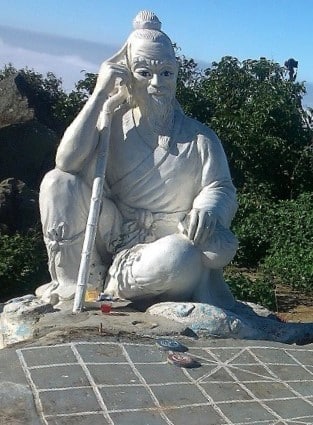
At Ban Co Peak you can also play chess with fairy, De Thich, if you’re feeling lucky! A large chessboard at Ban Co Peak was installed at the apex of the peak in 2018 and quickly became a sought-after destination for both locals and tourists alike.
Local myth describes a marathon game between De Thich and a another, younger fairy, that lasted several days. De Thich finally lost the game because he was distracted by a group of nubile fairies at Tien Sa Beach below.
Commemorating this story, a statue of De Thich contemplating a move sits by a large chessboard installed at the apex of the peak.
Visitors are invited to play games of chess against friends or strangers while admiring the spectacular views from the peak. There is also an area nearby where players may rest between games.
Army Radar Station – Indochina Miraculous Eyes
The army radar station is a military area and it is still used to protect territorial sovereignty, so travelers are not allowed to visit. However, you can stop and take some pictures. The facility picked up the name ‘Indochina Miraculous Eyes‘ during the American-Vietnam War.
Dong Dinh Museum
Not far from Lady Buddha and the Linh Ung Pagoda, Dong Dinh Museum offers a cool respite on hot summer days for visitors to Son Tra Mountain.
Built on a gentle hill, Dong Dinh Museum occupies a modern architectural house built with forest ecology in mind. This unique architecture has been appreciated by ecologists and architects at home and abroad.
While the house itself is an interesting exhibit, there is a fishing village memorial and art and antique exhibitions within the complex as well.
Events such as fine art workshops and rotating exhibitions from Vietnam and abroad also take place.
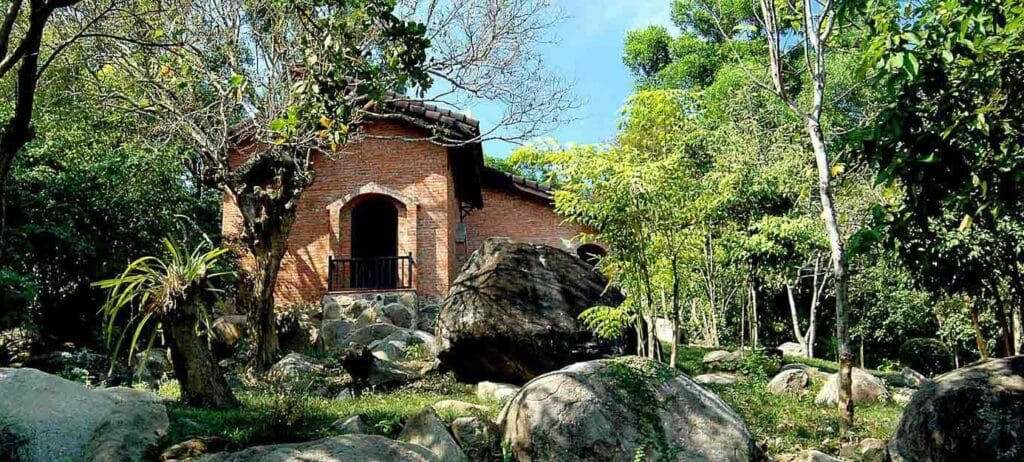
Monkey Mountain: Getting There
How far is Monkey Mountain from Hoi An?
Monkey Mountain is 42 kms north of Hoi An or an hour’s drive by car or motorbike. It is a great day trip if you want to escape the vibrant city of Hoi An for a few hours.
How to get from Hoi An to Monkey Mountain
If you’re looking for local transport, you can catch a bus from Hoi An to Da Nang. From Da Nang a motorbike, via the Grab mobile app is a good option or take a taxi. Otherwise, you can rent a car or motorbike (if licensed) or book a private tour.
Private Tours
Almost every travel company in Hoi An and Da Nang offers day trips to Monkey Mountain. The tours usually include a drive to the summit with a stop at the Marble Mountains – home to limestone caves filled with shrines to Lord Buddha – en route. Packages with the archeological complex of My Son Sanctuary and/or Dragon Bridge, which breathes fire on Friday and Saturday nights, are also possible. Tours start at 500.000 VND (21 USD).
For greater visibility jeep tours are a good option.
Also, nature lovers can take early morning or late afternoon tours that specialise in trying to get sightings of the macaques and langurs (500.000 VND/21 USD).
Private Car or Motorbike
There is no doubt that the winding and inclining roads looping around Monkey Mountain are a popular for motorcyclists but in order to reach the top, you need a powerful vehicle. Standard bikes may not be powerful enough to carry pillion passengers and automatic bikes and scooters are banned. So keep this in mind before renting a car or motorbike.
Traveling by jeep or private car are the alternatives.
Once you’re on the mountain, hiking enthusiasts can enjoy the verdant jungle trails and also take in the local flora and fauna.
What to wear for Monkey Mountain
When exploring Monkey Mountain it is important that you wear sturdy shoes and breathable clothes, especially if you want to do some hiking. On top of that, make sure you wear a hat and sunscreen. Lastly, be very generous when applying insect repellent.
Practical Information (Opening Hours, Cost)
Monkey Mountain is open to the public all year round and there are no admission fees. However, if you can, try to go mid-week so you can avoid the crowds that tend to flock at weekends. Also, if you want to enjoy the best views of Son Tra Peninsula, go at sunset. This way, you will also avoid hiking at midday, when the humidity and heat are at their peak. Finally, if you can manage it, go on a clear day, the peaks can be shrouded in cloud when there’s rain about and the views will be substantially limited.
Frequently Asked Questions
The US forces had communications bases on Son Tra (Camelia Mountain) during the American-Vietnam War and renamed it Monkey Mountain because of the troops of monkeys they encountered there.
Monkey Mountain is 10 kms from Da Nang’s city center and about 42 kms away from Hoi An.
Yes, but automatic motorbikes including scooters are banned and low cc bikes will struggle, especially if there is a passenger.
No. They are very different . For information on the Marble Mountains see https://hoiannow.com/things-to-do-in-hoi-an/hoi-an-attractions/the-marble-mountains/
There are several species of monkeys on Son Tra Peninsula including the Red-shanked Douc Langur, the Long-tailed Macaque and the Rhesus Macaque.
There are several rare species on Son Tra Peninsula. Criticaslly endangered is the Red-shanked Douc Langur.
Other Great Day Trips
Other great day trips in the Hoi An – Da Nang area include My Son, Ba Na Hills and the Marble Mountains.